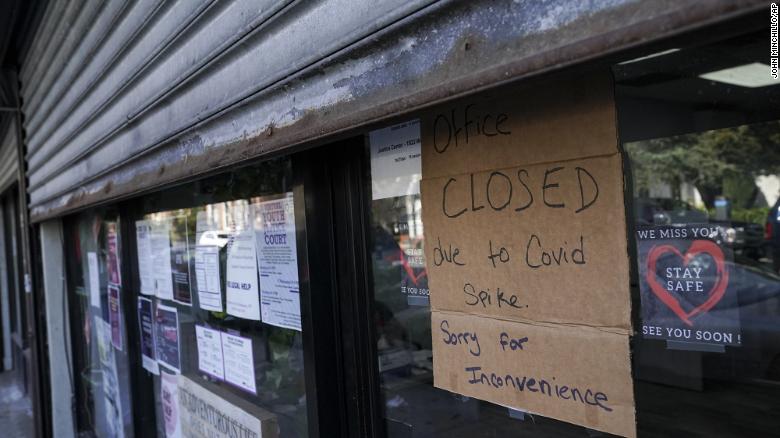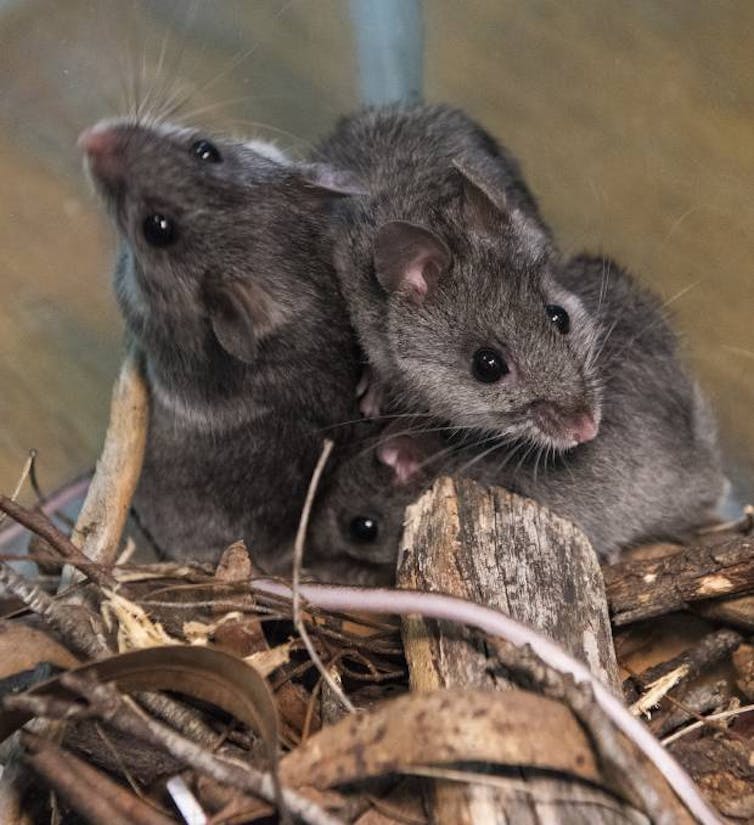David Rosenberg: The U.S. economy is much closer to a bust than a boom — and markets are mispriced


We based our index on something called the “Mahalanobis distance,” which was introduced for economic purposes by recent research out of the Massachusetts Institute of Technology (A New Index of the Business Cycle by William Kinlaw, Mark Kritzman and David Turkington). We then deployed seven different macroeconomic and market-price indicators at a monthly frequency: the original four used in the paper (industrial production, the U.S. 10-Year T-Note/Fed funds rate spread, nonfarm employment and the S&P 500) supplemented with initial unemployment claims, single-family housing construction permits and the Conference Board’s consumer expectations index.
From a technical perspective, our definitions of “booms” and “busts” are the same as those from the MIT report: a bust is a technical recession as defined by the National Bureau of Economic Research, and a boom is a period where the year-over-year growth rate in industrial production is in the 75th percentile of the past 10 years.
The index is centered around 50, which corresponds to an economy that is neither running “hot” nor “cooling off.” A value of less than 50 means that the indicators are showing more features of a recession than a boom period (a value of zero is when the indicators are fully pointing to recession). Values above 50 mean the economy has more in common with solid growth, while a value of 100 would be a consensus that a boom is ongoing.
The index is responsive to the start of recoveries, as it jumps quickly back to values close to 50 at the conclusion of recessions (with the tech wreck and Great Financial Crisis taking slightly longer). However, the six-month trend performs quite well in anticipating recessions (values below 50 have preceded every recession since 1980 with the notable exception of 2015-2016) and with turning points off the lows that signal the resumption of growth.
The current value and six-month trend both sit at zero, firmly planting conditions as of September’s data in the Bust category. Going back to the late 1970s, the only other time the six-month average has hit these lows was in the later stages of the Great Financial Crisis. Though, with initial jobless claims still more than 750,000 per week, and nonfarm employment at -6.4% year over year (still worse than any period since the demobilization after the Second World War), this really shouldn’t be much of a surprise — the bulls, for some reason, see making up lost ground with unprecedented stimulus as the primary reason for being positioned with a pro-cyclical bias. Meanwhile, the debt overhang that caused the 2009-2019 economic expansion to have been the weakest in the past seven decades has only become worse and represents a massive tax liability and constraint on aggregate demand for the foreseeable future.
The equity market may have surged off its March lows, and credit spreads sharply tightened on both real and pledged Fed intervention, but the actual fundamentals paint a pretty bleak picture. Activity is still severely depressed and with COVID-19 cases reaching another daily record last week, it may be some time before things turn around.
In the face of this uncertainty, a portfolio positioned defensively — including Treasuries, gold and equities that trade with “utility-like” characteristics and have reliable dividend growth characteristics — is a prudent strategy that mitigates downside risks, but has the ability to capture upside potential, as economic growth prospects are very sluggish and inflation risks are still low alongside a massive resource gap in the broad economy.
David Rosenberg is founder of independent research firm Rosenberg Research & Associates Inc. and Andrew Hencic is a senior economist there. You can sign up for a free, one-month trial on his website .

© Provided by Financial Post A closed deli in the Brooklyn borough of New York City. The U.S. economy has a long way to go to get back to anything that can be remotely called a pre-COVID-19 norm, writes David Rosenberg.
By David Rosenberg and Andrew Hencic
To help alleviate all the confusion over whether the United States economy is actually out of recession and into a full-fledged and reliable recovery, we have constructed a new Boom-Bust index that measures exactly where the economy is operating relative to some semblance of normality.
The index is based on a set of seven economic and financial indicators and is designed to judge whether economic performance is more similar to an average economic boom or an average recession. What it currently shows (with all due deference to the increased risk appetite through the spring and summer courtesy of unprecedented fiscal stimulus and massive market-price distortions by the U.S. Federal Reserve) is that the economy, sad to say, is really not out of its recessionary state; at a minimum, it shows that we have a long way to go to get back to anything that can be remotely called a pre-COVID-19 norm. This, in turn, tells us that if you are prone to being long the pro-cyclical reflation trade that is so contingent on a vaccine, it’s best to wait for this to become a trend rather than a trade… or, more than likely, a value trap.
By David Rosenberg and Andrew Hencic
To help alleviate all the confusion over whether the United States economy is actually out of recession and into a full-fledged and reliable recovery, we have constructed a new Boom-Bust index that measures exactly where the economy is operating relative to some semblance of normality.
The index is based on a set of seven economic and financial indicators and is designed to judge whether economic performance is more similar to an average economic boom or an average recession. What it currently shows (with all due deference to the increased risk appetite through the spring and summer courtesy of unprecedented fiscal stimulus and massive market-price distortions by the U.S. Federal Reserve) is that the economy, sad to say, is really not out of its recessionary state; at a minimum, it shows that we have a long way to go to get back to anything that can be remotely called a pre-COVID-19 norm. This, in turn, tells us that if you are prone to being long the pro-cyclical reflation trade that is so contingent on a vaccine, it’s best to wait for this to become a trend rather than a trade… or, more than likely, a value trap.
We based our index on something called the “Mahalanobis distance,” which was introduced for economic purposes by recent research out of the Massachusetts Institute of Technology (A New Index of the Business Cycle by William Kinlaw, Mark Kritzman and David Turkington). We then deployed seven different macroeconomic and market-price indicators at a monthly frequency: the original four used in the paper (industrial production, the U.S. 10-Year T-Note/Fed funds rate spread, nonfarm employment and the S&P 500) supplemented with initial unemployment claims, single-family housing construction permits and the Conference Board’s consumer expectations index.
From a technical perspective, our definitions of “booms” and “busts” are the same as those from the MIT report: a bust is a technical recession as defined by the National Bureau of Economic Research, and a boom is a period where the year-over-year growth rate in industrial production is in the 75th percentile of the past 10 years.
The index is centered around 50, which corresponds to an economy that is neither running “hot” nor “cooling off.” A value of less than 50 means that the indicators are showing more features of a recession than a boom period (a value of zero is when the indicators are fully pointing to recession). Values above 50 mean the economy has more in common with solid growth, while a value of 100 would be a consensus that a boom is ongoing.
The index is responsive to the start of recoveries, as it jumps quickly back to values close to 50 at the conclusion of recessions (with the tech wreck and Great Financial Crisis taking slightly longer). However, the six-month trend performs quite well in anticipating recessions (values below 50 have preceded every recession since 1980 with the notable exception of 2015-2016) and with turning points off the lows that signal the resumption of growth.
The current value and six-month trend both sit at zero, firmly planting conditions as of September’s data in the Bust category. Going back to the late 1970s, the only other time the six-month average has hit these lows was in the later stages of the Great Financial Crisis. Though, with initial jobless claims still more than 750,000 per week, and nonfarm employment at -6.4% year over year (still worse than any period since the demobilization after the Second World War), this really shouldn’t be much of a surprise — the bulls, for some reason, see making up lost ground with unprecedented stimulus as the primary reason for being positioned with a pro-cyclical bias. Meanwhile, the debt overhang that caused the 2009-2019 economic expansion to have been the weakest in the past seven decades has only become worse and represents a massive tax liability and constraint on aggregate demand for the foreseeable future.
The equity market may have surged off its March lows, and credit spreads sharply tightened on both real and pledged Fed intervention, but the actual fundamentals paint a pretty bleak picture. Activity is still severely depressed and with COVID-19 cases reaching another daily record last week, it may be some time before things turn around.
In the face of this uncertainty, a portfolio positioned defensively — including Treasuries, gold and equities that trade with “utility-like” characteristics and have reliable dividend growth characteristics — is a prudent strategy that mitigates downside risks, but has the ability to capture upside potential, as economic growth prospects are very sluggish and inflation risks are still low alongside a massive resource gap in the broad economy.
David Rosenberg is founder of independent research firm Rosenberg Research & Associates Inc. and Andrew Hencic is a senior economist there. You can sign up for a free, one-month trial on his website .














